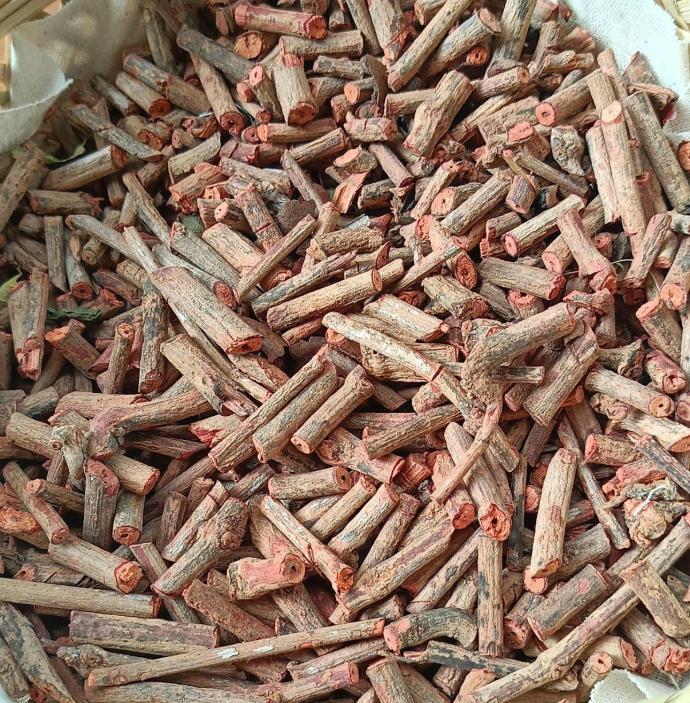Wild Himalayan Madder
The Himalayan Madder (Rubia tinctorum), a plant deeply embedded in the cultural fabric of Eastern Bhutan, is a treasure that has shaped the traditions of this region for centuries. Growing in the cool, shaded areas beneath larger plants, the Himalayan Madder thrives in the wild, particularly in the high-altitude landscapes of Lhuentse,Mongar , Trashigang, Trashiyangtse,Pemagatshel, Trongsa where it flourishes in the dappled sunlight of the Himalayan foothills. It is believed that the Madder plants that grow in the shade produce brighter, more vibrant colors than those exposed to direct sunlight—an ancient wisdom passed down through generations.
In Bhutan, this plant has long been used in the tradition of dyeing eggs red during the annual Prew festival, a local celebration marking the arrival of spring. The rich, earthy red hues extracted from the roots of the Himalayan Madder symbolize vitality, renewal, and good fortune, making it an integral part of the festival’s rituals. The dye from this plant comes in a range of captivating shades, from deep crimson to softer oranges, each unique depending on how it is processed and applied.

Himalayan Madder, with its sprawling, runner-like growth has historically been more than just a dye. In the days of the ancient Silk Trade Route between Bhutan and Tibet, the roots of this plant became a valuable commodity, used not only for coloring fabrics but also as a primary product in the barter system. The vivid dyes produced from Madder were highly prized in both regions, and its roots served as a means of exchange, reinforcing the connections between distant lands and cultures.
Though primarily recognized today for its role in the vibrant textiles and ceremonial practices of Bhutan, the Himalayan Madder is a living reminder of the rich, interconnected history of the Himalayan region. Its deep, warm colors—extracted from the roots with care and respect—continue to bind together the past and the present, dyeing not just fabrics, but the traditions of the people who have long called this land home.